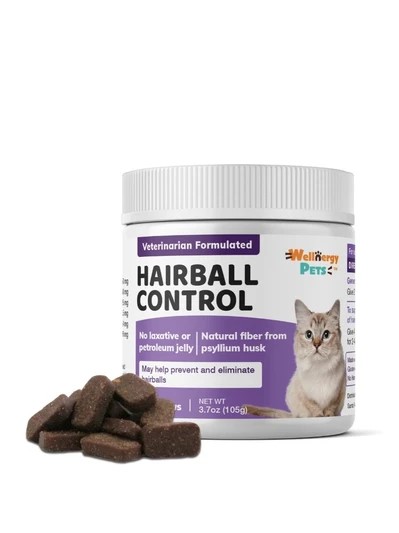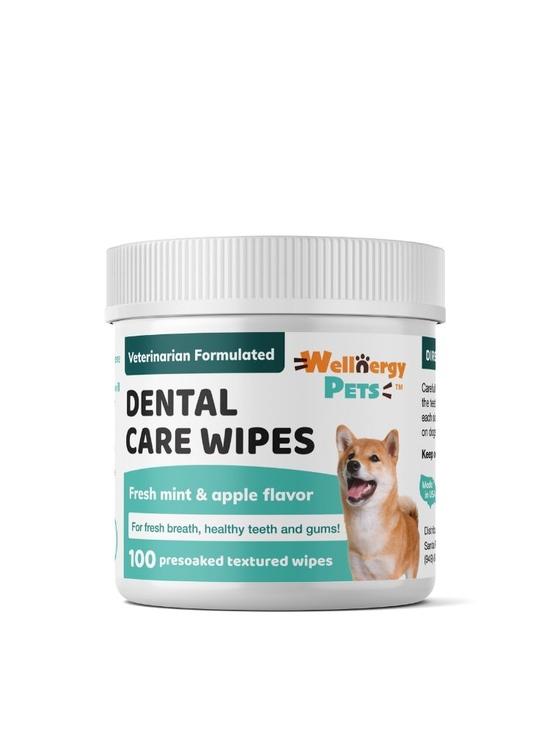Hurk, hurk, hurk, blaagh! I think I can speak for all cat owners that the sound of one of our furry felines vomiting a hairball is one of the most effective ways to be awoken from a dead sleep. Cats are known vomiters in popular culture, and no cat parent is a stranger to the experience. However, did you know that it’s actually not normal for cats to vomit up hairballs? That’s right – the digestion of hair should happen naturally for every kitty, and having hairballs is a sign that something is not quite right in your cat’s body.
What Is A Hairball?
Hairballs are exactly as the name implies – they are slimy clumps of hair and stomach fluids that come out when a cat vomits, otherwise known as a ‘trichobezoar’. Typically, there is no food or other material mixed in. Hairballs are formed when a large amount of hair is ingested during grooming. The natural, sharp barbs of a cat’s tongue pick up loose hairs that are then swallowed.
Despite the name, hairballs are rarely ever in the shape of a ball. Instead, they are typically elongated, which is formed by the shape of the esophagus they pass through on their way out. The stomach fluids that come out range from clear to yellow or green, while the hair retains its original color.
Your cat is getting hairballs? Then you need this contact info:-
Wellnergy Pets
Phone: (949) 878-9387
hello@wellnergypets.com
Calming treats and medications may be helpful for getting our pets get through the holiday happily and safely. Click below to check out our Calming Chews here at Wellnergy Pets!
What Causes Hairballs?
While most ingested hair passes from the stomach through the intestines and out of the body as fecal matter, in some cats, this process doesn’t occur effectively. For these cats, the hair becomes trapped in the stomach and causes irritation. Some of the hair then gets vomited out as a hairball. A rare, but related life-threatening condition is when a clump of hair becomes stuck in the intestines, causing an obstruction. This obstruction can impede food from passing through and can even cut off intestinal blood circulation.
Who Gets Hairballs?
Any cat can suffer from hairballs, and most cats inevitably do occasionally. Cats with the following traits more commonly suffer from hairballs:
– Long-haired cats
– Cats who overgroom themselves
– Cats who groom other cats or pets
– Cats who are not eating enough fiber
– Cats with other intestinal disorders
What Are Some Symptoms of Hairballs?
– Vomiting and producing hairballs more than once every few months
– Continuous vomiting or gagging without producing anything
– Lethargy
– Constipation or diarrhea
– Decreased appetite
How Are Hairballs Treated?
In milder cases, your veterinarian may recommend one or more of the following remedies:
– At home grooming: Grooming your cat regularly can help to decrease the amount of loose hairs that become ingested.
– Stress relief: Many cats overgroom due to stress. Finding ways to alleviate your cat’s stress levels and expending their energy in other ways, like playing, can help decrease the amount of hair that gets ingested.
– Hairball remedies: Many different types of over-the-counter hairball remedies are available. These come in different forms, such as crunchy treats, gels, and drops. All hairball remedies help by increasing fiber intake, which can aid in gastrointestinal motility and digestion. My favorite are Wellnergy Pets Hairball Control supplements! The Omega fatty acids improve cat’s coat health, the natural fiber from psyllium husk improves your cat’s digestive health, and the added cranberry also helps to promote cat’s urinary tract health!
In more serious or chronic cases, it’s best to visit your veterinarian for further recommendations. It’s also a great idea to record a video of your kitty while he or she is showing symptoms so your veterinarian can see everything in action! Is your cat suffering from hairballs? As always, don’t hesitate to share your thoughts in our comments section or contact us on Facebook, Instagram, or e-mail!


















No Comments